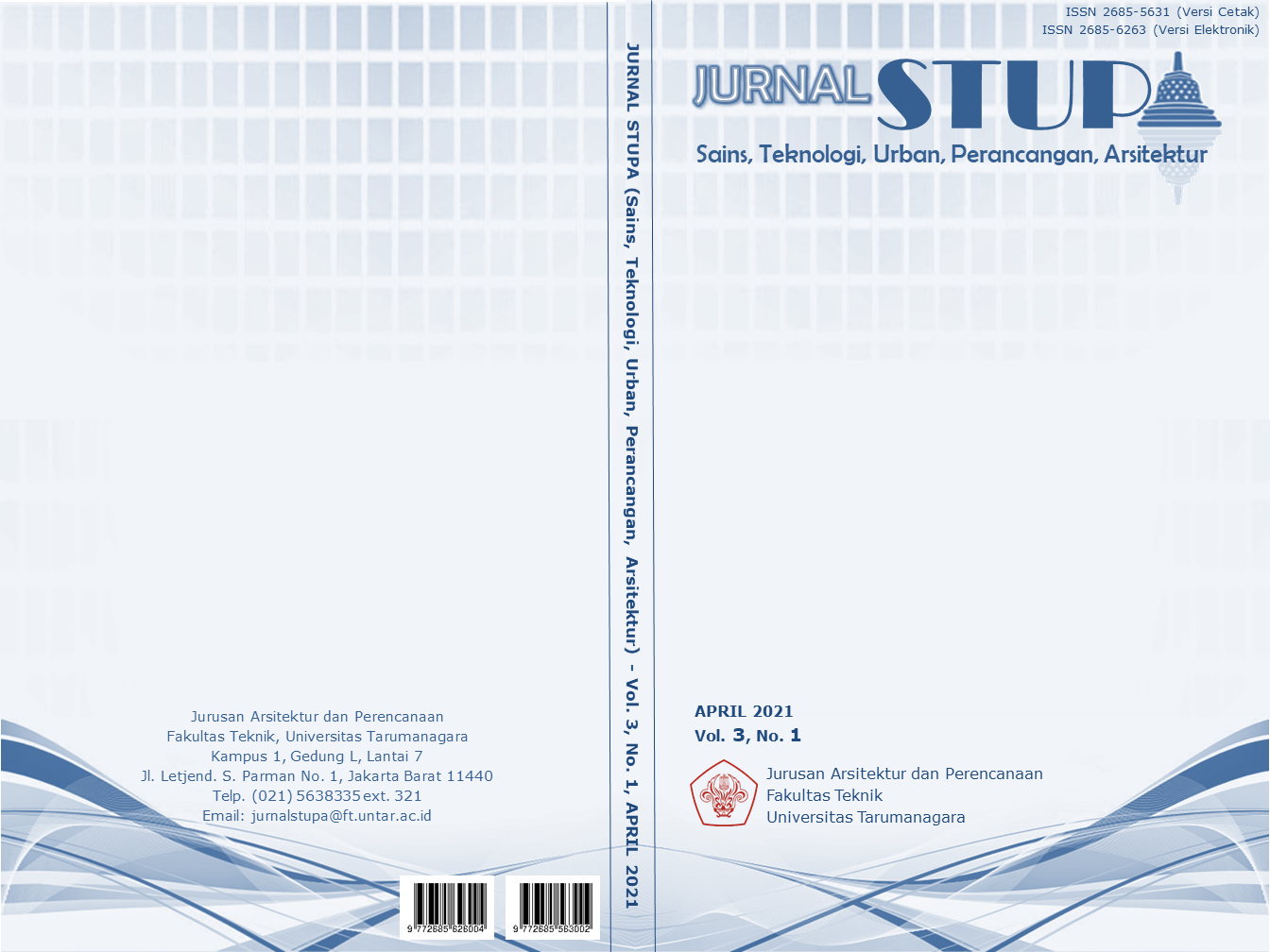NON ISOLATED BLOCK : ARSITEKTUR YANG BERPERAN DALAM MEMBERIKAN JAWABAN KERUANGAN DALAM KONTEKS BERHUNI DI MASA DEPAN
Isi Artikel Utama
Abstrak
In 2020, the outbreak of COVID-19 virus is a shock to every individual and to society. In this time, people lives in a term called "space limitation", isolated in a radius and a certain space that makes people lives in a virtual space. This pandemic limits our living space, altered out daily routine, and makes us isolated in a space that causes us to break ourselves physically and mentally. By nature, architecture can't ignore a problem that is this extreme, architecture has a purpose to make space to be a product of humanity, the purpose of this project is the will to create a future living spaces that is unobstructed, undisturbed, and opened; going through a block by giving a communal space; communal space that connected each other between the inside and outside space so that it provides the feeling of togetherness. This “Non-Isolated Block” project starts by incorporating the meaning of “isolated” and “block”. A block or a box is one of the basic of design, a block marks efficiency in a space but considered “simple & bare”. A block that stood on its own and unconnected makes us feel alone. There should be connectivity from this block to create a living space that makes us feel un-caged or “non-isolated”. By using this “inside, outside, and through the block” concept, this project is aimed to split activities based on space. “Inside the block” is for private activities, “outside the block” is for public activities, and “through the block” is a communal space that has a role as an emerging space, space that is connected to one another, to increase togetherness and productivity.
Keywords: block; communal space; non-isolated; space limitation; through the block.
Abstrak
Munculnya wabah COVID-19 pada tahun 2020 ini merupakan sebuah guncangan terhadap suatu individu dan masyarakat. Saat ini, manusia hidup dalam “batas ruang”, terisolasi dalam radius dan jarak bahkan ruang hidupnya adalah ruang virtual. Wabah ini membatasi ruang gerak kita, merubah pola aktivitas keseharian kita, membuat kita terisolasi dalam suatu ruang yang dapat membunuh kita secara fisik dan mental. Secara fitrahnya, arsitektur tidak dapat mengabaikan sesuatu yang ekstrem ini, arsitektur memiliki tujuan untuk meruangkan ruang sebagai suatu produksi kemanusiaan, sehingga tujuan dari proyek ini yaitu keinginan untuk menciptakan hunian masa depan yang tidak terhadang, tidak terhalang, dan terbuka; saling menembus antar ruang-ruang dengan fungsi ruang komunal; ruang komunal yang saling terkoneksi satu sama lain di antara ruang dalam dan ruang luar sehingga meningkatkan rasa kebersamaan. Proyek “Non-Isolasi Blok” ini bermula dengan mengambil arti dari “isolasi” dan “blok”. Blok atau kotak merupakan salah satu dasar desain, kotak menandakan efisiensi dalam ruang tetapi dianggap "sederhana & polos". Suatu blok yang berdiri sendiri dan tidak terkoneksi membuat kita merasa tersendiri. Perlu ada konektivitas dari bentuk blok ini untuk menciptakan suatu hunian dengan perasaan tidak terkurung atau “Non-Isolasi”. Dengan konsep “ruang dalam, luar, dan antara”, proyek ini membagi aktivitas berdasarkan ruang. Ruang dalam menjadi ruang dengan aktivitas privat, ruang luar menjadi ruang dengan aktivitas publik, sedangkan ruang antara menjadi ruang komunal yang berperan sebagai ruang tembus, ruang yang terhubung satu sama lain dengan ruang tembus lainnya, sehingga meningkatkan kebersamaan dan produktivitas.
Rincian Artikel
Referensi
Courtney, E. (2020, December 21). Remote Work Statistics: Navigating the New Normal. Diambil kembali dari Flexjobs: https://www.flexjobs.com/blog/post/remote-work-statistics/
Gandha, M.V. (2020). Dwelling + Time [Learn From The Past for The Future]. 1 & 2.
Janning, F. (2015). Philosophy for Everyday Life. Journal of Philosophy of Life, 5 (1): 3.
Meesters, J. (2006). Finding the Meaning of Dwelling in Everyday Activities [tesis]. Belanda: (NL):Delft University of Technology OTB Research Institute for Housing, Urban and Mobility Studies.
Nation, U. (2015). The 17 Goals. Sustainable Development Goals. Diambil kembali dari https://sdgs.un.org/goals
Norberg-Schulz, C. (1985). The Concept of Dwelling: on the way to figurative architecture. New York : Rizzoli
PORTAL STATISTIK SEKTORAL DKI JAKARTA. (2020). Dipetik October 2020, dari http://statistik.jakarta.go.id/
Steemers, K. (2008). ARCHITECTURE FOR WELL-BEING AND HEALTH. Dipetik 2020, dari http://thedaylightsite.com/architecture-for-well-being-and-health-2/
Torres, N. (2015, September). Productivity | Gazing at Nature Makes You More Productive: An Interview with Kate Lee. (Harvard Business Review) Dipetik October 2020, dari https://hbr.org/2015/09/gazing-at-nature-makes-you-more-productive
Winata, S. (2020, July). Dwell(ing), A Question of Architecture. 3.



